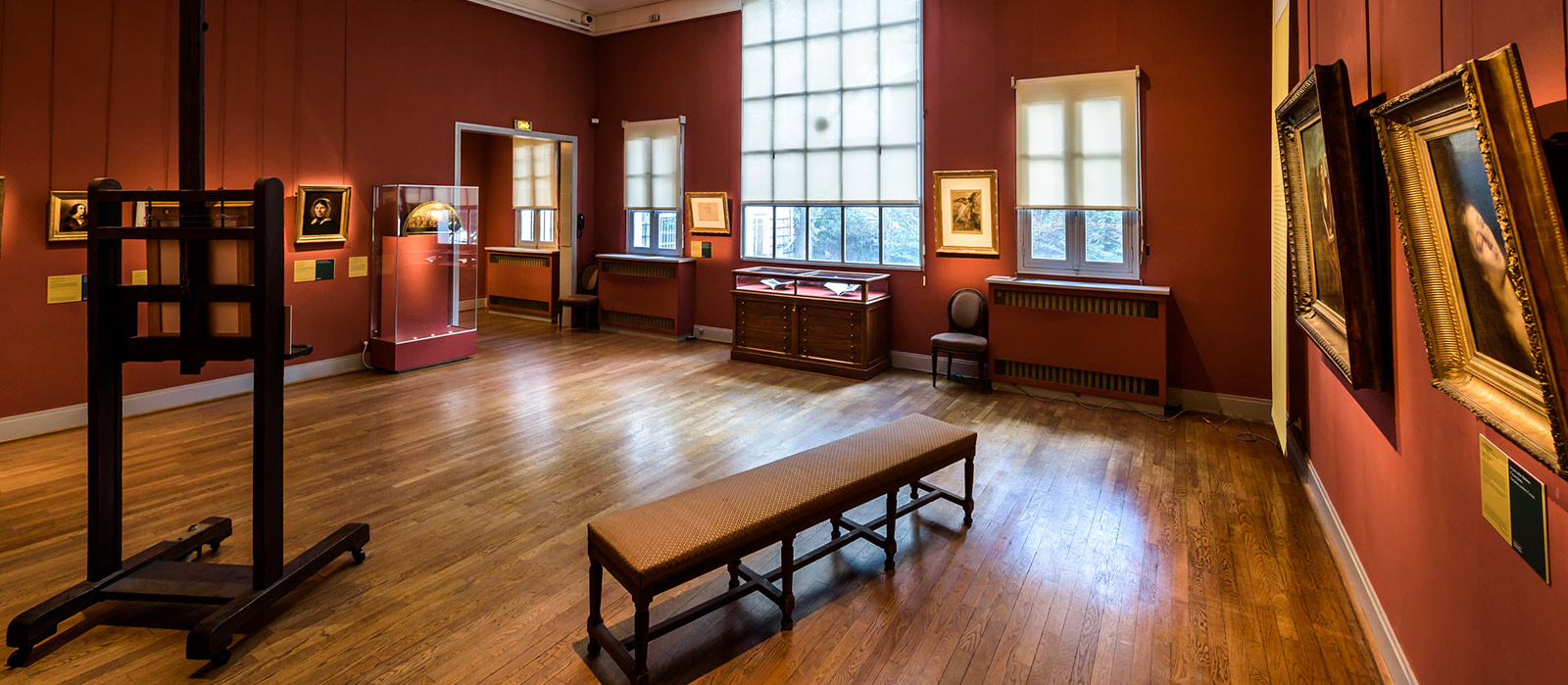Museum & Studio
The Premises
A secret place to discover and share
The Musée Delacroix is located on the upper floor of 6 Rue de Furstemberg, in the apartment occupied by the painter Eugène Delacroix from 1857 to 1863. The studio designed by the artist and the lovely garden he landscaped like a peaceful haven at the heart of Paris are the highlights of this secret place just waiting to be discovered. A rare location to share and enjoy.
The layout between the courtyard and the garden, the appeal of an old building featuring typical 18th-century Parisian architecture, and the tranquil garden lend the Musée Delacroix a unique charm.
From square to museum

The Place de Furstemberg where Delacroix chose to make his home is known as one of the most charming squares in Paris.
The small square is planted with four large trees that create a particularly romantic atmosphere in the spring, further heightened by the light of a five-bulb lamp-post at night.
A large double door and a semicircular arch lead into the museum from the street. An independent staircase in the center of the facade runs up to the apartment rented by Delacroix. The painter himself is the one who had the monumental stairs installed, giving the apartment a nobler appearance.
During the late 17th century, the area formed the forecourt to the Saint-Germain-des-Prés abbatial palace, which is still visible on the corner of Rue de l’Abbaye and Rue de Furstemberg. The buildings lining the square were the outbuildings of the Saint-Germain-des-Prés abbey. The coach houses for the carriages and the horses were on the ground floor, while the servants’ quarters were on the upper floors.
Delacroix moved to 6 Rue de Furstemberg two centuries later, in 1857. The site has remained intact since then, offering a rare example of Parisian architecture from the mid-19th century.
Step inside the museum

From the building courtyard, the museum is reached via the monumental staircase used by Delacroix and his guests. An elevator was installed in 2014 to provide access for all visitors.
The apartment is arranged around a small hallway that served as an antechamber in Delacroix’s time. The three adjoining rooms—the former dining room, the bedroom, and Delacroix’s parlor—are now home to the museum’s collection of paintings, drawings, prints, and writings by the artist and his admirers. The final room of the apartment, once the painter’s library, overlooks and leads to the garden. It is a lounge area for our visitors to read, dream, write, or watch films and videos.
A wood and metal staircase, similar to the one that Delacroix had installed, leads down to the painter’s studio, a place of creation designed by the artist as a personal tribute to his work. Located at the heart of the museum, Delacroix’s studio is where the most prominent pieces of the collection are displayed. Concerts, conferences, creative workshops, and many other events are also held there.
In the apartment and studio alike, the renewed display of the permanent collection gives visitors the opportunity to discover different artworks through the seasons.
The museum organizes a major exhibition each year, featuring prestigious and distinguished loans from museums in France and abroad.
Explore the garden

As you leave the studio, take a few more steps down to the garden, landscaped by Delacroix like a peaceful haven at the heart of Paris.
Refurbished in 2012, the garden displays a wealth of plants, fruit trees, and flowers that reflect the tastes of its former owner.
The unspoiled garden is a space where you are free to read, dream, share, and talk.
It also regularly exhibits works by contemporary artists such as Johan Creten, José Maria Sicilia, Stéphane Thidet, Constance Guisset, and Katerina Bock, whose works were chosen or created in homage to Delacroix.


